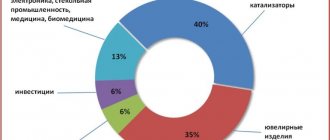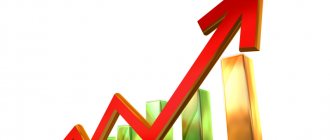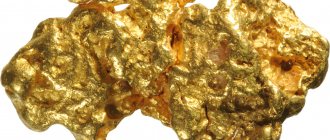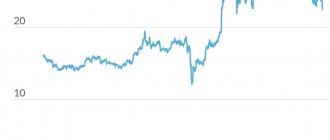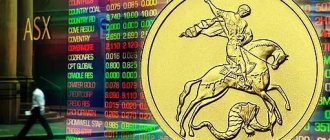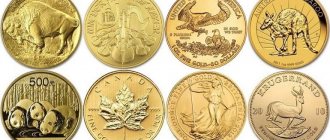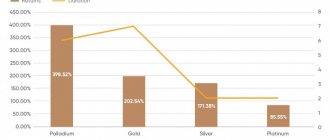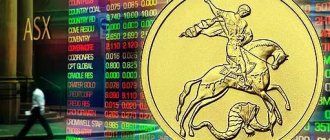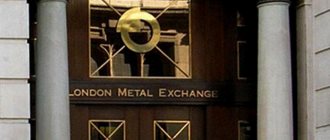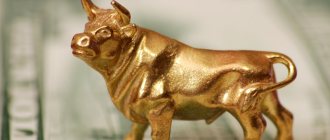19.09.2021
The price of silver rose sharply in early September, approaching its highest level in a month, but it was unable to maintain its gains and fell quickly.
Silver rose from $23.84 on September 2 to $24.80 on September 6, but returned to $23.80 ten days later.
Silver chart
The precious metal hit an eight-year high in February 2021, hitting $30 an ounce for the first time since 2013, but the commodity has struggled to find support since then. The price fell sharply in June and again in August as the US Federal Reserve (Fed) indicated it could begin tapering monetary stimulus by the end of this year. The price of silver has fallen by about 14.5% since the beginning of the year, having lost 6.3% in August alone, and stood at about 23 USD per ounce on September 17th.
What has stopped silver from rising sharply despite ongoing economic uncertainty that is expected to push up precious metals prices? What are the key market drivers and what are the prospects for the rest of the year?
Silver struggles despite uncertain macroeconomic backdrop
The silver price trend fell sharply in June in response to the Fed's bearish comments. Investors tend to increase their exposure to silver and gold when interest rates are low and inflation is high to protect the value of their money from erosion and lack of interest payments. However, the prospect that inflation will be temporary and interest rates will rise has dampened investor interest.
Silver has been a “noticeable underperformer of gold for much of the summer,” with the gold-to-silver ratio rising from 67 to 77, MKS-PAMP analyst Nicky Shiels noted in a recent outlook report. This ratio refers to the number of ounces of silver required to purchase one ounce of gold. Silver “missed the reflation trade and lagged the strong base metals/copper rally due to physical overhang.”
Shiels noted that silver markets remain structurally oversupplied due to the combination of primary and by-products produced at the mines. The fundamental surplus excluding investment demand has increased since 2021. But supply chain disruptions and strong regional industrial demand for high-grade silver are keeping physical prices low. Demand for silver coins from retail investors is on track to reach a five-year high. However, traders and investors have already sold 120 million ounces of silver this year—worth about a billion ounces.
Silver's 14.5% year-over-year decline indicates that physical demand is not enough to absorb the oversupply.
Silver miner First Majestic Silver (AG) reported in its quarterly results Oct. 12 that it suspended silver sales in the third quarter as it stuck to higher prices. It was written there:
“At the end of the quarter, the company held 1.4 million ounces of silver in inventory due to the decline in silver prices in the third quarter. Silver sales are expected to resume in the fourth quarter.”
The company's silver production increased 1% from the previous quarter to 3.3 million ounces.
Silver inventories held by the LBMA fell 0.2% in September to 36,486 tons, or $25.2 billion and equivalent to about 1.2 million silver bars. The decline indicated that investors were selling shares.
Returning to the negative news on silver prices, Ole Hansen, head of commodity strategy at Dutch bank Saxo, wrote on October 11:
“Hedge funds made another attempt to trade precious metals on the long side, with net long gold up 61% to 67.8k lots and long silver up 1k to 4.6k lots. Overall, exposure to both metals remains weak given the ongoing battle between the two metals to achieve gains during times of favorable price developments.”
The U.S. personal consumption expenditure index, a measure of the prices people pay for goods and services, rose 4.3% year over year in August, the biggest increase since 1991. The Fed uses an index to measure inflation. Data released on October 1 supported the price of silver.
Silver fell from $22.47 on September 28 to $21.49 on September 29, then rose again to $22.05 on September 30 and $22.54 on October 1. It has since traded between $22.54 and $22.71.
The JP Morgan Global Manufacturing Purchasing Managers' Index (PMI), also released on October 1, was unchanged in September at a six-month low of 54.1 recorded in August. However, it marked the 15th straight month of growth as output growth accelerated for the first time in five months.
Silver is used in a wide range of industrial applications, from solar panels, electronics and electric vehicles to medical devices, water purifiers and wood preservatives. Since industrial consumption accounts for about half of annual global silver demand, industrial activity influences silver prices.
As always, it is vital to keep in mind that past performance is not an indicator of future profits.
So, will silver prices rise or fall next year?
Should you buy silver?
There are several reasons why investors choose to have silver in their portfolios.
Hedging against falling stocks and bonds
Investors have traditionally held a small portion of their portfolios in gold and silver to hedge against price volatility in other assets. Gold and silver can maintain their value even when stock and bond prices fall during recessions and periods of economic uncertainty.
Long-term demand growth
Long-term trends such as the transition to solar power generation, electric vehicles and 5G telecommunications networks are expected to increase demand for silver through the production of solar panels, electronics and electrical components. This could tighten the supply-demand balance and lead to higher silver prices in the coming years.
Decrease in production volumes
At the same time, as demand is expected to increase, the long-term supply of silver in the mining industry is projected to decrease due to lower ore grades, which will reduce the rate of silver production from mines. There are not enough new mining projects that could come online in the next few years, and new deposits could take decades to open.
High liquidity
Since it is one of the most actively traded commodities in the world, it is easy to trade physical silver or invest in silver mining stocks whenever you want to get in or out of the market.
Tight spreads mean investors can always buy and sell at prices close to the market.
Silver price forecast: what's next for the precious metal?
Looking ahead to the silver market, analysts continue to balance expectations that inflation could support the price against monetary policy that could continue to exert downward pressure.
Technical analysis from Zaner on October 12 showed that “we see the path of least resistance heading down in gold and silver. Chief among the bearish forces is the lack of response to classic bullish forces such as macroeconomic uncertainty and inflation... low consolidation support in silver seen at $22.38 before falling back to $22.18. In order to turn the tide higher in the silver market, it would require a rally above the seven month old downtrend channel resistance line, which is $23.39 today.”
Analysts at Capital Economics have a negative outlook on the long-term silver outlook. They wrote in a recent comment:
“We believe that weaker physical demand, higher real U.S. Treasury yields and a stronger dollar will mean that recent poor silver price performance will continue over the next two years.”
But analysts at Australian bank ANZ forecast silver will average above $24 in the second half of 2022. They wrote in their monthly gold and silver outlook: “The Fed has signaled a taper and a rate hike is on the horizon. However, we believe negative real yields and inflation expectations should support investment demand. The US dollar is expected to remain weak as other central banks move ahead of the Fed in their rate cuts and hikes.”
MKS PAMP's Shiles views the silver market as "fundamentally crowded, but attractive as a low-cost, high-beta gold proxy with an 'energy transition' accelerator."
The analyst noted that its “unique properties suggest that silver will play a vital role in enabling the clean energy transition spanning generation, storage and consumption (e.g., from silver oxide batteries, solar panels, BEVs to the rise of 5G networks).” .
Shiels has a base average forecast of $28/oz for silver prices in 2022, up from $26/oz in 2022, with gains ranging between a “new post-QECovid cyclical low” of $22.50 and peak retail demand at $30 an ounce seen earlier this year.
A bullish scenario based on strong physical and investment demand along with supply chain risk puts the price at around $35 per ounce, while a bearish scenario with higher interest rates and a stronger dollar would see the price fall to around $15 per ounce .
The silver price forecast from WalletInvestor, a site based on forecasting algorithms, suggests the metal could end at $23.53 per ounce in 2021, $27.61 in 2022, $31.69 in 2023, 2024 - $35.95 and in 2025 - $40.09.
When considering analyst comments or forecasts from algorithm-based forecasting services, it is important to keep in mind that they can and do get their estimates wrong. You should always conduct your own research, taking care to consider all relevant market conditions.
Follow Capital.com to stay up to date with the latest market news, analysis and forecasts, and identify potential trading opportunities.
QUESTIONS AND ANSWERS
Why is silver worth less than gold?
Silver is trading at a deep discount to gold because there is a more affordable supply. There is less gold in the ground than silver, so less gold is mined. About 3,300 tons of gold were mined globally in 2021, compared to 27,000 tons of silver, according to the US Geological Survey. At the same time, gold is more valuable than silver as a form of currency, and investors and central banks prefer gold to silver as a hedge.
What makes silver rise and fall?
The price of silver typically moves in tandem with the price of gold in response to macroeconomic factors. Higher interest rates and a stronger US dollar tend to put pressure on the price of gold, while higher inflation, lower interest rates and a weaker dollar provide support. There are more industrial uses for silver than for gold, so global industrial production can also influence the price of silver.
How much will silver be worth in 2030?
Some analysts predict that the price of silver will remain under pressure in the short term. Looking to the future, the Coin Price Forecast shows that the price of the metal could exceed $60 per ounce. At the same time, it is critical to keep in mind that analysts and algorithm-based forecasting services may be wrong in their forecasts. You should always do your own research.
Will silver prices rise in the future?
Whether the price of silver will rise depends on the US Federal Reserve's policies on interest rates, inflation, as well as the strength of the US dollar. Supply and demand will also be key factors as both mining and industrial production recover from disruptions during the Covid-19 pandemic.
Large silver holders on metal
Thomas Kaplan, founder of Electrum Group
Investments in silver helped Kaplan become a billionaire. Electrum Mines controls mining operations with resources totaling more than one billion ounces of silver. Kaplan believes that the price of silver could rise to $100 in the long term. He told Kitco in December 2021:
“Once silver stabilizes and gold rises as one of the monetary metals, silver then follows gold and then it gains octane and surpasses gold. This is what happened during the financial crisis and we are starting to see it again."
Warren Buffett, co-founder of Berkshire Hathaway
Billionaire investor Warren Buffett's Berkshire Hathaway fund bought 129.7 million ounces of silver in 1997 and early 1998, betting that dwindling inventories with outpacing demand for production and refining could only be addressed by rising silver prices.
Buffett said in his 1997 letter to shareholders:
“Marketed, this position generated pre-tax earnings for us of $97.4 million in 1997.” In some ways, this is going back in time for me: thirty years ago, I bought silver because I was expecting it to be demonetized by the US government. Since then I have followed the silver data, but I have not owned it.”
Berkshire Hathaway sold its assets in 2006 for a much higher price.
JP Morgan
US investment bank JP Morgan owns one of the world's largest reserves of silver. Data from the COMEX Futures and Options Market shows that JP Morgan holds about 50% of the physical silver bar inventory held in exchange warehouses, amounting to about 184.5 million ounces. With silver prices around $23.50 an ounce, reserves were valued at about $4.3 billion.
Silver price forecast for 2021-2022
The price of silver started 2021 at $26.52. Silver was trading at $23.32 today, down -12% year-to-date. The forecast price for silver at the end of 2021 is $25.13, with a year-over-year change of -5%. Growth from today to the end of the year: + 8%. In the first half of 2022, the price of Silver will rise to $27.38; in the second half of the year the price will add $0.28 and end the year at $27.66, which is + 19% to the current price.
Short term forecast:
- Saturday, October 16 – $23.34
- Sunday, October 17 – $23.36
- Monday, October 18 - $23.39.
- Tuesday, October 19 – $23.41
- Wednesday, October 20 - $23.43
- Thursday, October 21 - $23.46
- Friday, October 22 – $23.48
- Saturday, October 23 - $23.50.
- November 15 – $24.05
- December 15 – $24.75
- January 15 – $25.32
- February 15 – $25.70
- March 15 – $26.05
